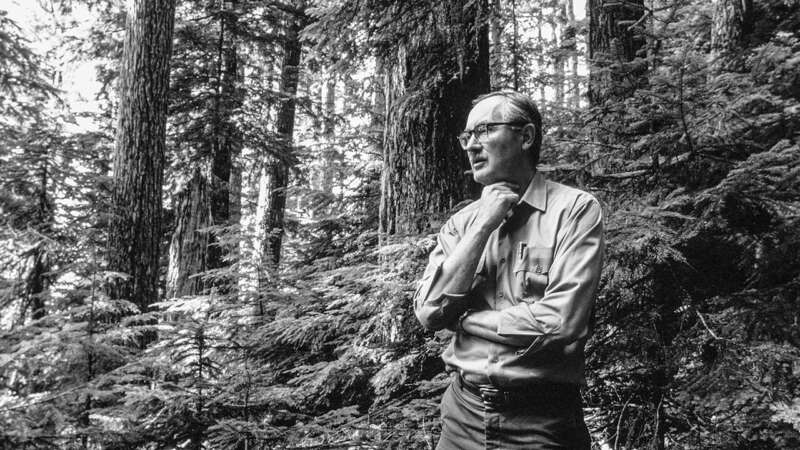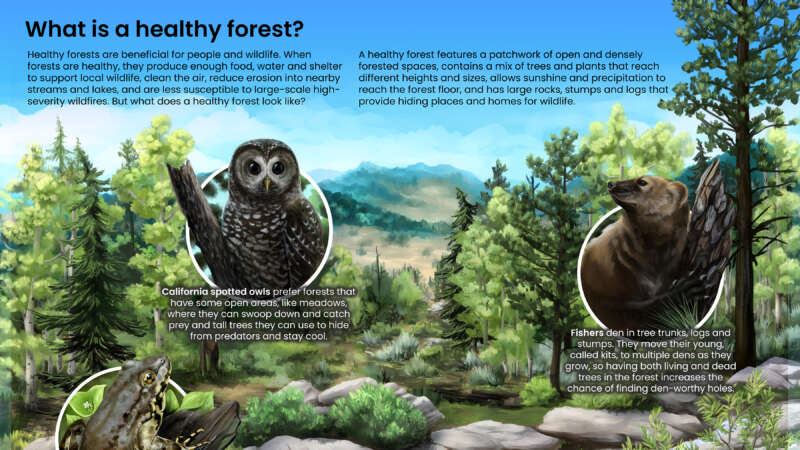Focus on Forest Medicines | July 2024
This month’s publication includes articles, infographics, and featured people centered around forests and the medicines they provide.
Thomas Dambo: The Master of Upcycled Urban Sculptures
Thomas Dambo, born in Odense, Denmark in 1979, grew up in a creative and communal environment. From a young age, Dambo was encouraged to explore his creativity, building his first wooden box for his brother’s pacifier and scavenging materials to construct massive fortresses with his friends.
As a teenager, Dambo delved into street art, urban exploration, and graffiti. His passion for urban culture and hip-hop led him to become a beatboxer, touring with Norwegian rapper Skranglebein. In 2004, he formed the hip-hop super crew Fler Farver with his younger brother and friends, releasing nine albums and gaining significant recognition in the Danish underground hip-hop scene.
Jerry Franklin: The Father of New Forestry
Jerry Franklin, known as the “Father of New Forestry,” has made his mark in forest management for integrating ecological and economic objectives. His approaches, which faced skepticism initially, have become the standard in both environmental and timber industry circles.
Franklin began his career as a research forester for the USDA Forest Service in 1959. His early work included long-term experiments on forest ecosystems, particularly old-growth forests.
Chimpanzees May Self-Medicate With Plants, Using the Forest as a Pharmacy
Chimpanzees may be using the forest like their own personal pharmacy. When they’re sick, the primates appear to seek out and eat plants with antibacterial and anti-inflammatory properties, according to new research.
Observers have long suspected that chimpanzees use plants to self-medicate. Now, a new paper published last week in the journal PLOS ONE offers more evidence in support of this idea.
Researchers followed two groups of wild chimpanzees through Uganda’s Budongo Forest for eight months. They recorded what the animals ate, as well as whether they were sick—which they determined by checking their feces for parasites, testing their urine for elevated levels of immune cells and looking for wounds.
Shrinking Forests, Emerging Diseases
Dona Dora’s man is away from home a lot more these days. It didn’t used to be like that.
He leaves early, sometimes on foot, but increasingly on his bicycle, and heads into the forests surrounding Belém, the capital of Brazil’s Para province. He keeps his eyes open especially for five medicinal plants that are always in demand — sucuúba (Himatanthus sucuuba), copaíba (Copaifera spp.), andiroba (Carapa guianensis), barbatimão (Stryphnodendron spp.) and pãu d’arco (Tabebuia avellanedae).
Fifteen years earlier, he would have found all five within hours and been back for lunch, but times have changed. These days, medicinal forest plants in high demand are becoming harder to find as forests that have stood strong for millennia are cleared to make way for grazing pastures for millions of cattle, agriculture, and development.
Now, Dona Dora’s man can spend a whole day and not find more than a few plants. It might be late at night before he gets back home.
What is a Healthy Forest?
Healthy forests are beneficial for people and wildlife.
When forests are healthy, they produce enough food, water and shelter to support local wildlife, clean the air, reduce erosion into nearby streams and lakes, and are less susceptible to large-scale high-severity wildfires.
But what does a healthy forest look like?




